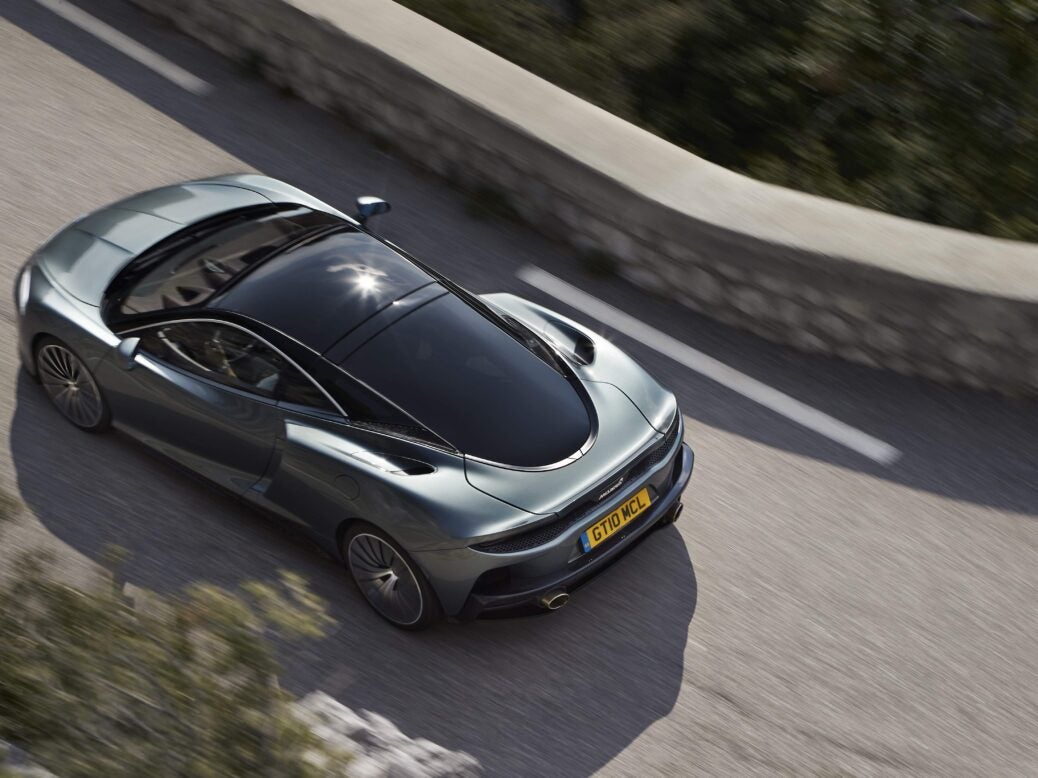
McLaren’s impressive new GT offers more firm evidence that the old days of the impractical supercar are over, says Mark Walton
Supercars have changed a lot over the past 50 years. A 1970s Lamborghini Countach is so cramped that climbing in is like being folded into an envelope; Ferraris of the 1980s had clutch pedals like a weightlifter’s gym equipment.
With their dodgy switchgear, offset pedals and ventilation that could poach an egg, supercars were quirky but pointless. Most owners did about 12 miles a year.
Arguably it was the Honda NSX of 1990 that changed everything. Yes, Japan’s first supercar was a little bland, but the NSX was also wonderfully driveable. Its light-touch functionality spooked Ferrari and Lamborghini, and the result is still felt to this day: with their automatic gearboxes and 200 litres of luggage space, supercars have been trapped, neutered, ear-tagged and domesticated.
These days, anyone can drive one.
This sophistication has caused a bit of blurring in the taxonomy of cars. Back when supercar owners only did 12 miles a year, you had to drive a different kind of car if you wanted to go on a long journey – you needed a ‘grand tourer’. But today, modern supercars are just as happy blasting to the Riviera as they are popping to Waitrose for a pint of milk. They’ve become expensive all-rounders.
Subtle shift
And that’s where this car comes in: this new McLaren is what happens when a supercar manufacturer decides to push things a bit further and do a modern, mid-engined interpretation of the traditional grand tourer. What if you ripped up the classic GT design cues, like the long bonnet, walnut dashboard and leather armchairs?
What if you built something lighter and more agile, but made it quiet and comfortable? The answer is the new McLaren GT. (The clue is in the name.)
Viewed as a supercar, the new GT isn’t revolutionary. Under the skin is a new version of McLaren’s carbon-fibre tub, super-light and derived from F1 technology; bolted in the back is a 612bhp, 4.0-litre twin-turbo V8 – cutting-edge, perhaps, but all familiar territory to schoolboy McLaren fans.
But look again through a GT lens and this car is more radical. No other grand tourer is built using carbon; most GTs weigh between 1,800 and 2,300kg, while this tips the scale at just 1,530kg. Most competitors take four seconds to reach 62mph; the McLaren takes just 3.2 seconds. Many GTs have tiny back seats that are useless for sitting in but handy for chucking your coat into. This is only a two-seater, but it has what McLaren calls a ‘Touring Deck’, a long, beautifully trimmed load area under that glass rear hatch.
McLaren says the deck will take a set of golf clubs or two pairs of skis – I can confirm it’s also good for chucking your coat in. But does all this make it a GT? The first thing you have to get your head around is the styling. Because the McLaren is, well, a supercar, right? Softened a little, yes, but it still looks like a low-flying fighter jet with its pointy nose and glass cockpit.
There’s also something theatrical about McLaren’s trademark ‘dihedral’ doors, but there is a practical benefit: they leave a big aperture to gracefully drop yourself down into the cabin. Inside, you’re in an world of sculpted leather and glass. It feels open and light, the dashboard minimalist and restrained.
The driving position is lower than a Bentley’s, but all-round visibility is excellent – another departure from supercars of the past. The GT’s ‘Comfort seats’ are supportive but relaxing and accommodating. Sound-deadening in the headlining, floor, doors and rear deck make the engine noise a little more subdued than the usual growly V8 when you start, but don’t worry, the performance is still nuts.
Cruising along, changing up with the metal paddle shifts, the GT is an incredibly easy car to drive swiftly. Like a surfer on a huge wave, you feel the depth and power beneath you, but if you choose to you can just roll over the surface without getting into the scary zone. The car also rides beautifully, like stroking your hand along an oak chair – all the tactile detail but polished smooth.
Monster crunch
But the GT has another trick up its sleeve. Extend your right foot deeper into the accelerator and it reveals its true McLaren heart. Between 5,000rpm and the 7,250rpm red line, the thrust morphs from muscular to monstrous.
Harden up your driving style and explore the responses, and you unearth a relentless turn of speed that will have your heart pounding. Everyone likes to quote that 0-62mph time, but think about this: the GT does 0-124mph in just nine seconds!
So does the new McLaren GT reinvent the grand tourer? Or is it just a supercar with the wrong badge? In a way, it simply reflects the moving plate tectonics of the past 40 years – supercars have become more refined and more usable, and GTs have grown into luxury SUVs (like the Bentley Bentayga or Aston DBX).
But there’s also a case to be made for simply forgetting the badge and thinking instead about what the car can actually do. If your question is could I drive the McLaren GT from London to Rome tonight, in a single, high-speed streak, the answer would be, ‘Oh god, yes please.’
Read more
Licensed to thrill: Aston Martin’s DBS Superleggera reviewed
The new Morgan plus Six reviewed: ‘has an indecent turn of speed’
Why the Cessna Citation M2 is the ideal entry point for new pilots
Lamborghini Huracán EVO review: ‘A gorgeous Italian thoroughbred’











